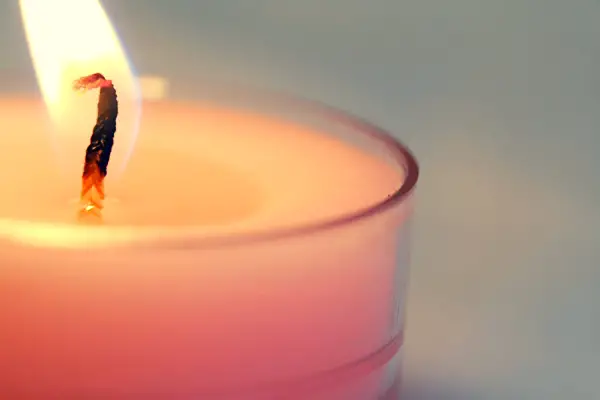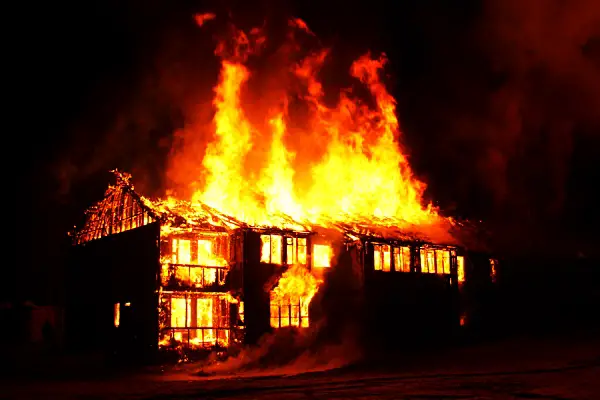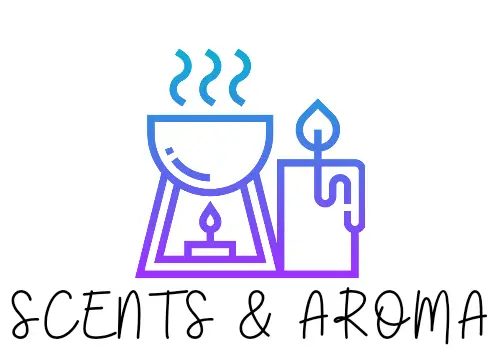If you enjoy lighting candles, whether it’s for their scent or their warmly glow, you might be wondering about their safety. Obviously, there are precautions that need to be taken when it comes to using naked flames around the home but have you ever wondered if candle wax is flammable?

So, is candle wax flammable and can it catch fire? While wax (like paraffin) used in candles is flammable, it doesn’t easily catch fire, it takes pretty intense heat to cause the wax to combust. When the wax is solid, it needs enough heat to become molten and turn into a vapour – it is this vapour that keeps the flame and the candle burning.
Let’s look at the flammable properties of candle wax in more detail.
Can candle wax catch on fire?
Yes, it is possible for candle wax to catch on fire. However, using candle wax for its intended purpose when burning a candle, it won’t catch fire. It will melt, though, of course.
The majority of candles out in stores are made from paraffin wax. Paraffin wax is derived from petroleum and crude oil, and when it turns into a vapour, it is highly combustible. Officially, paraffin wax is classed as combustible instead of flammable since its flashpoint is above 100⁰ F. If the circumstances are right, it will still catch fire.
The temperature at which candle wax can ignite depends, but it can catch fire at anything above 392⁰ F, which is around 200⁰ C. These temperatures are for pure paraffin wax. If there are additives in the wax, the ignition point will rise since the additives, and the paraffin bind and the molecular bonds are more difficult to break.
When there are additives in paraffin wax, it will burn at 480⁰ F, which is around 249⁰ C.
This is not unusual, though, as almost everything can catch fire if there is enough heat and oxygen.
Does candle wax burn away?
If you observe a burning candle, you’ll notice that some wax melts and drips down the stem of the candle. However, once the candle has burnt out, you’ll notice that there is not a lot of wax left over. This is because as the candle wax becomes molten by the flame, it vaporizes. It is this vapour that burns to form the flame. So essentially, the wax is being burned away.
If younwould like to read more about how candles evaporate and burn away have a look at this informative guide that I wrote.
Is candle wax a fire hazard?
Provided that candle wax and candles are stored safely, then they don’t pose a fire hazard.
Paraffin wax does have a low melting point (125-165⁰ F or 51-73⁰ C). This means that candles might get softer in sunlight or warm weather, but they won’t melt or catch fire.
However, a burning candle is certainly a fire hazard but not because it is made of wax but due to it having a naked flame.
According to the NFPA (National Fire Protection Association) in the United States, candles caused 3% of home fire deaths and 2% of home fires. Around one-third of fires caused by candles started in a bedroom, and falling asleep is a factor. December and the Christmas period is the peak time for candle fires in the home.
Candle burning safely

While we’ve established that candle wax alone probably won’t catch fire, it’s important to understand how to position and use candles safely. First, they should be placed securely so that they won’t topple over, and there should be nothing above or below that could catch fire. Second, placing a plate or saucer underneath a candle is a good idea so that it can catch any drips of wax or other things that fall from the candle. Finally, make sure that they’re out of reach of pets and children – and be wary of wagging dogs’ tails and cats that can jump up high!
Putting out a wax fire
To put out a candle, it is safest to use a candle snuffer. This device is best used so that you don’t spray any hot wax when you blow the candle out. It works by stopping oxygen from reaching the flame and is a quick and safe way to extinguish. Sometimes, you see people putting out candles by licking their fingers and pinching the wick. This is not recommended practice at all and often leads to burns.
If a candle causes a fire or wax itself catches fire, you shouldn’t use water to put it out. Since the wax will be molten, water could potentially send melted wax splattering everywhere. Instead, a candle wax fire is best treated as an oil fire – like a chip pan fire. To extinguish the flame, use a fire extinguisher that is suitable for cooking oil fires or, alternatively, use a fire blanket.
Could candle wax explode?
While it’s probably possible, it’s not likely. What’s more, any explosion of candle wax would likely be caused by an impurity in the wax rather than the wax itself.
To burn, a candle needs oxygen, fuel (wax), and heat. The wick works as a catalyst. It keeps the heat, drawing up the fuel. So the wick is essentially a helper to keep the candle alight.
When you’re burning a candle, it is only the upper surface that is exposed to oxygen, so the progression of the fire is slow. As long as this is kept small, there is very little danger of a fire starting with the wax.
In a scientific experiment, it is possible to create a wax explosion if the wax is melted and sprayed in fine droplets over a flame. You should never try this!
There are also known instances of candle jars and glasses cracking and exploding due to the heat from the candle. Have a read of my article to find our more.
Is beeswax flammable?
We’ve talked about paraffin wax being combustible rather than flammable, but what about beeswax?
Beeswax has a flashpoint of 400° F (204° C), which means it is classed as an IIIB combustible material. However, its flashpoint is too high to be considered flammable.
Does adding a fragrance oil cause a candle to be more flammable?
If too much fragrance oil is added to a candle, it can cause the candle wax to be unstable. As a result, the wax will become frothy and can be a fire hazard because the flame might burn irregularly.
When a candle has just been made and is cooling, excess fragrance oil seeps into the candle top. This oil will cause little pockets of fragrance oil to bubble on the surface. This causes flame issues that can be a massive fire hazard. The oils can also soak up the wick and cause a burst when you first ignite the candle.
Final thoughts
As we’ve seen, while candle wax is combustible, it’s not classed as flammable due to its flashpoint being too high. That said, burning candles always comes with a risk – as does anything that uses a naked flame. Therefore, you should always be mindful of how you use candles and where you position them in your home. Finally, never leave a burning candle unattended, and if you feel sleepy, extinguish the candle immediately.
- Can You Put Perfume In A Humidifier? (Read First) - September 17, 2022
- Can You Put Essential Oil In A Steam Mop? (Safety Advice) - September 17, 2022
- How To Make Lavender Oil At Home ( Candles And Diffusers) - September 9, 2022
